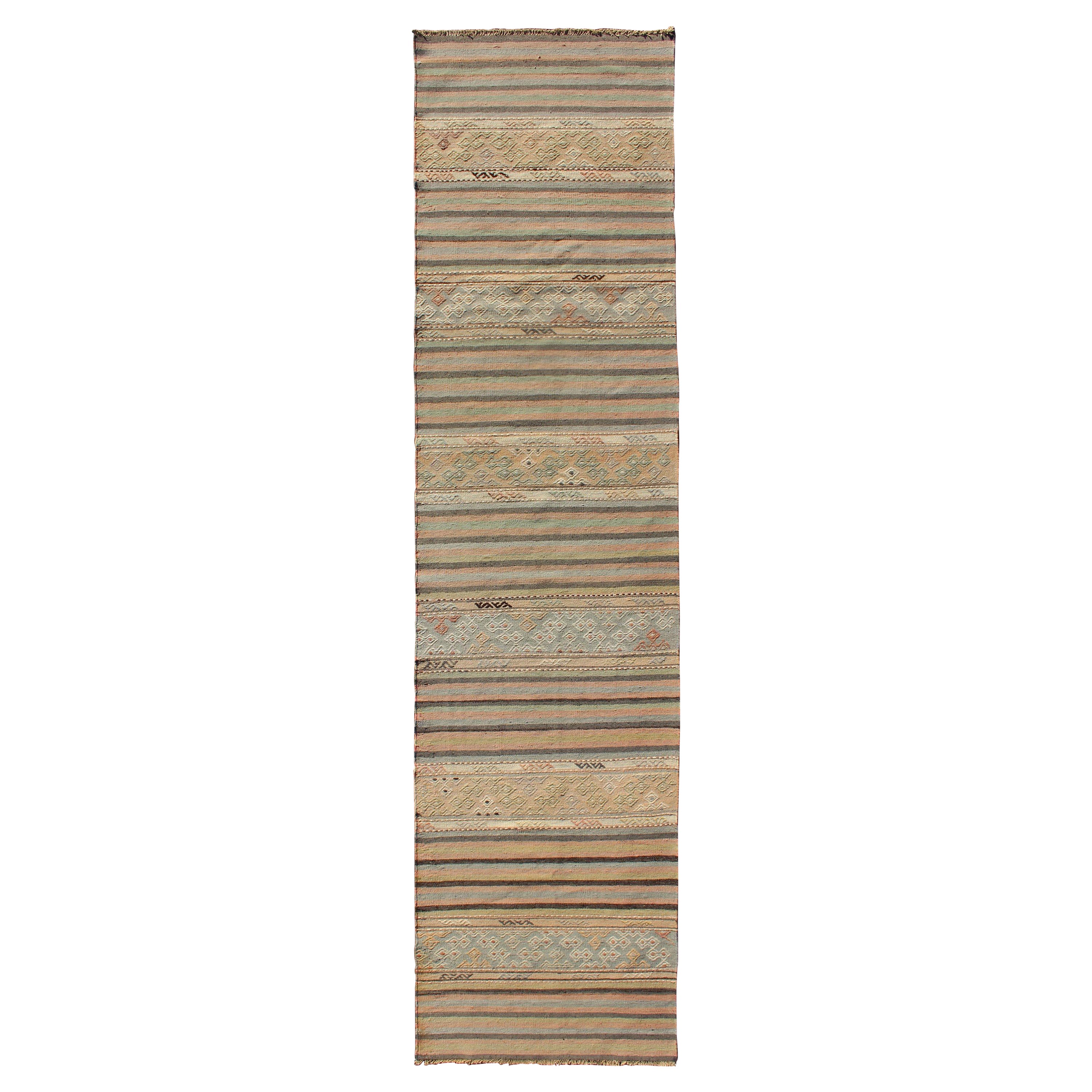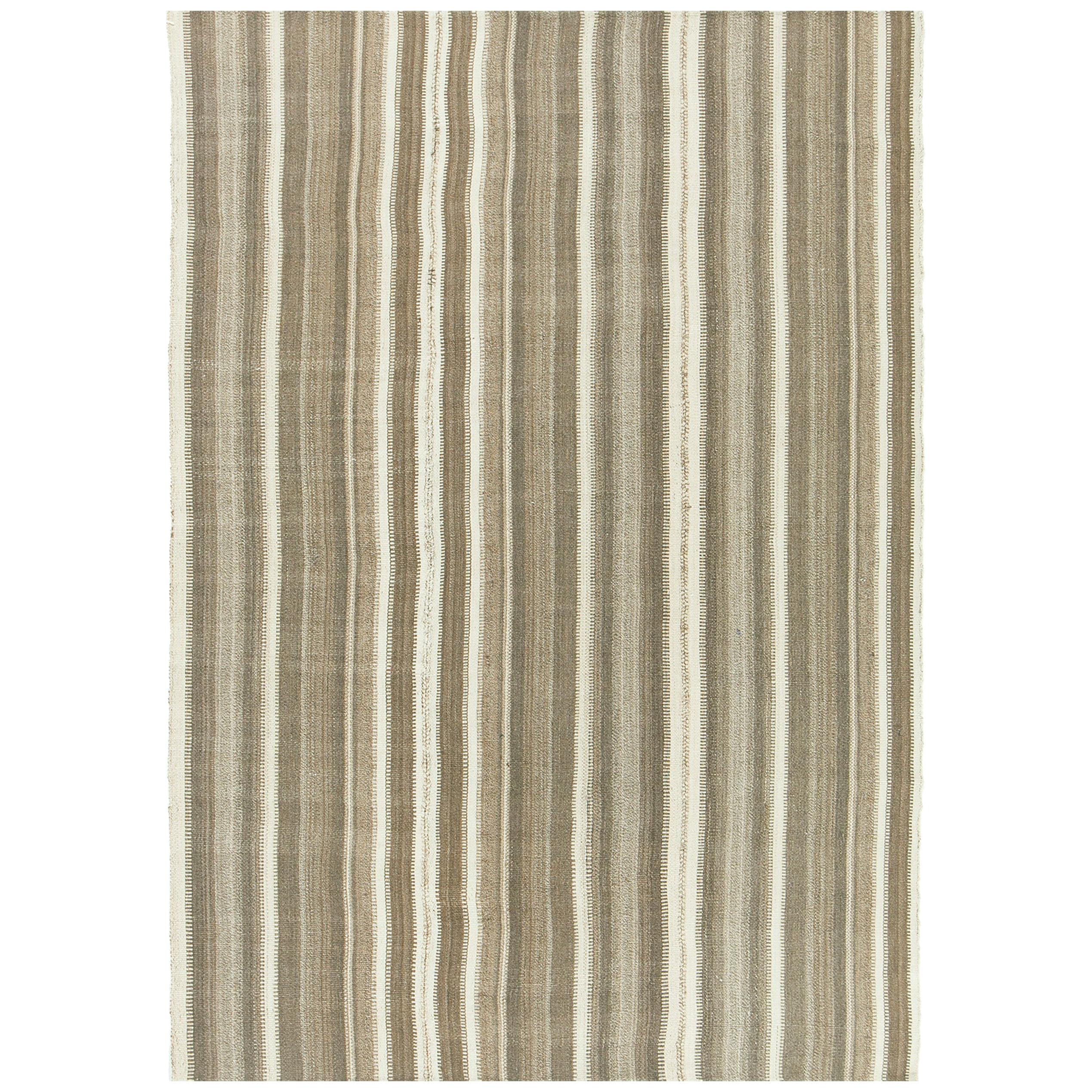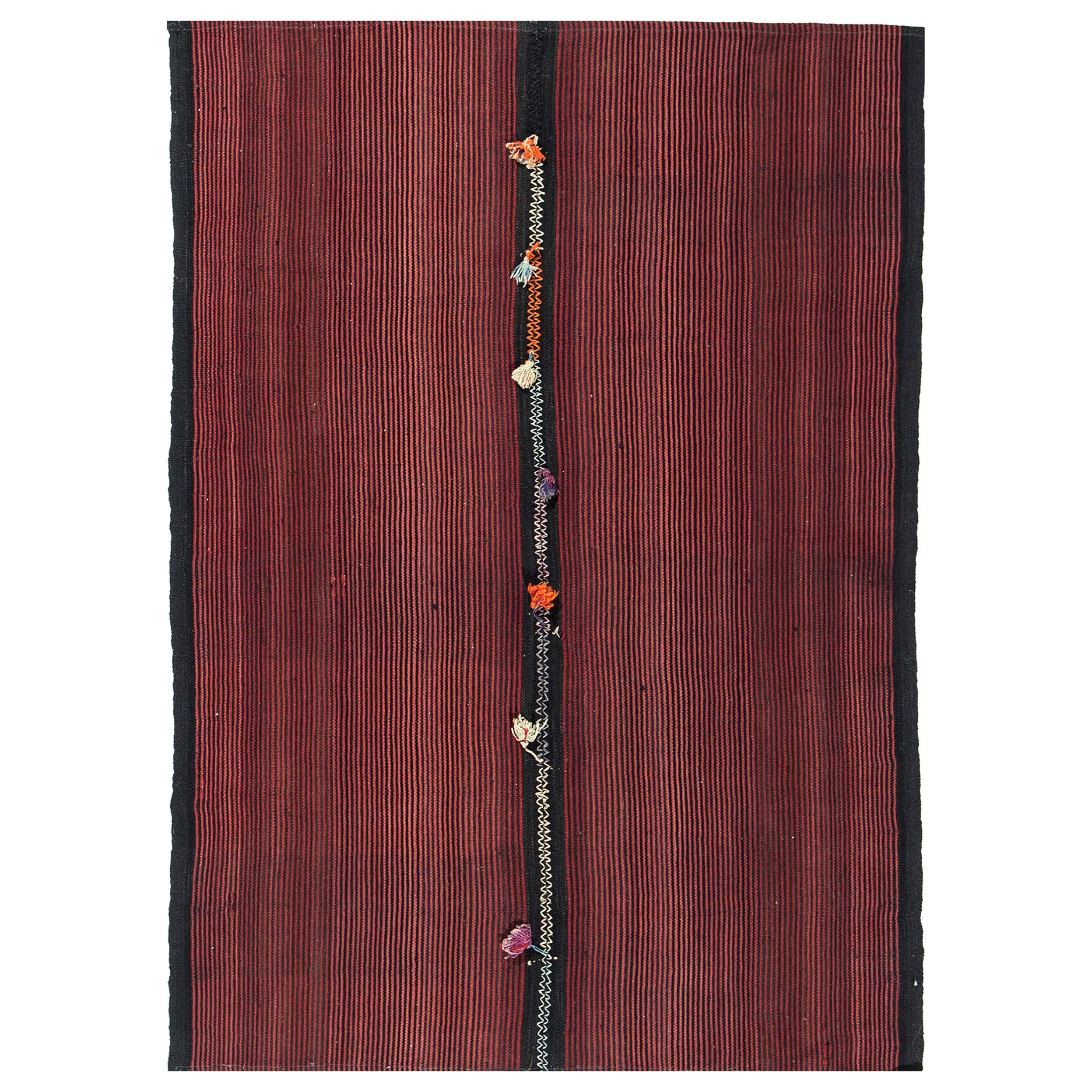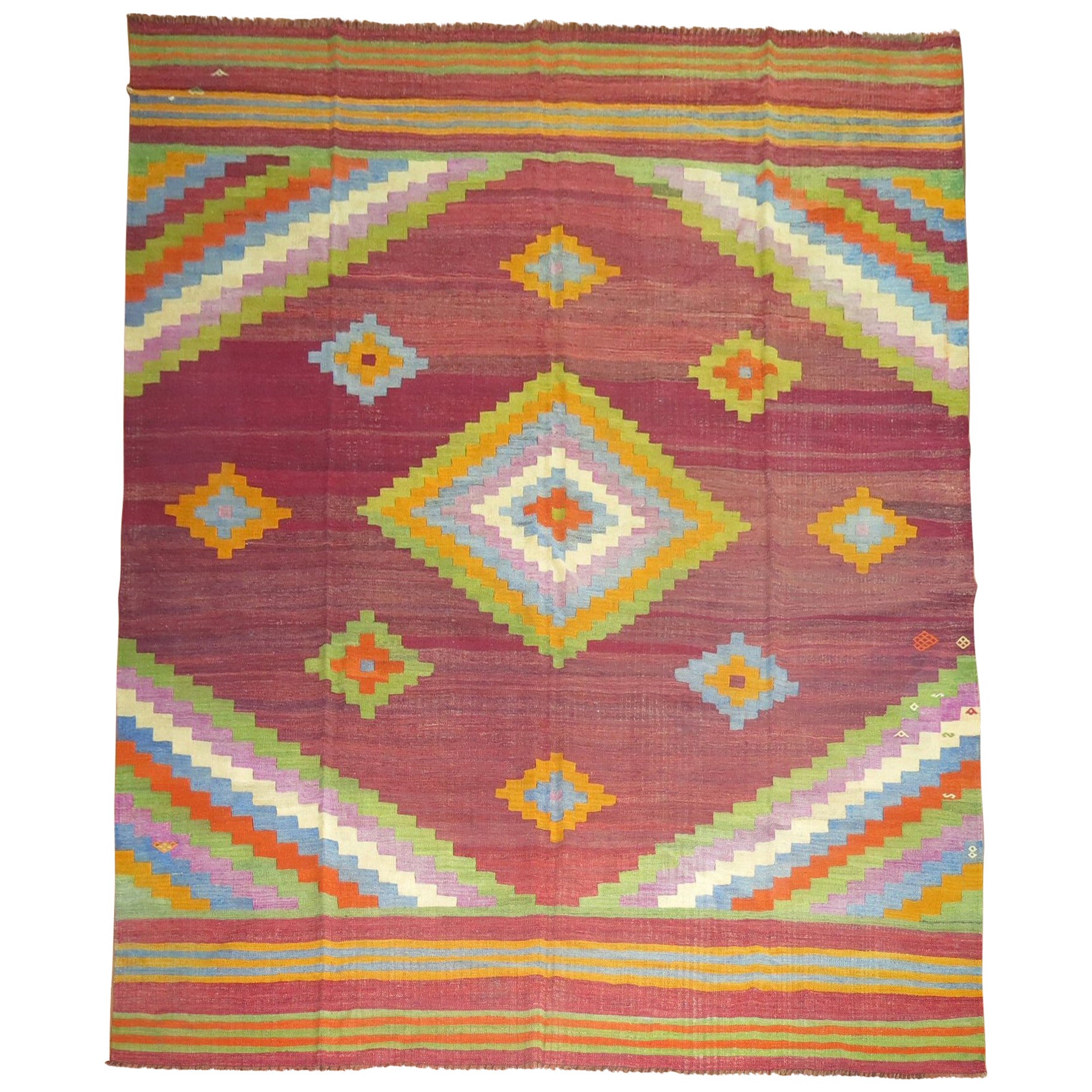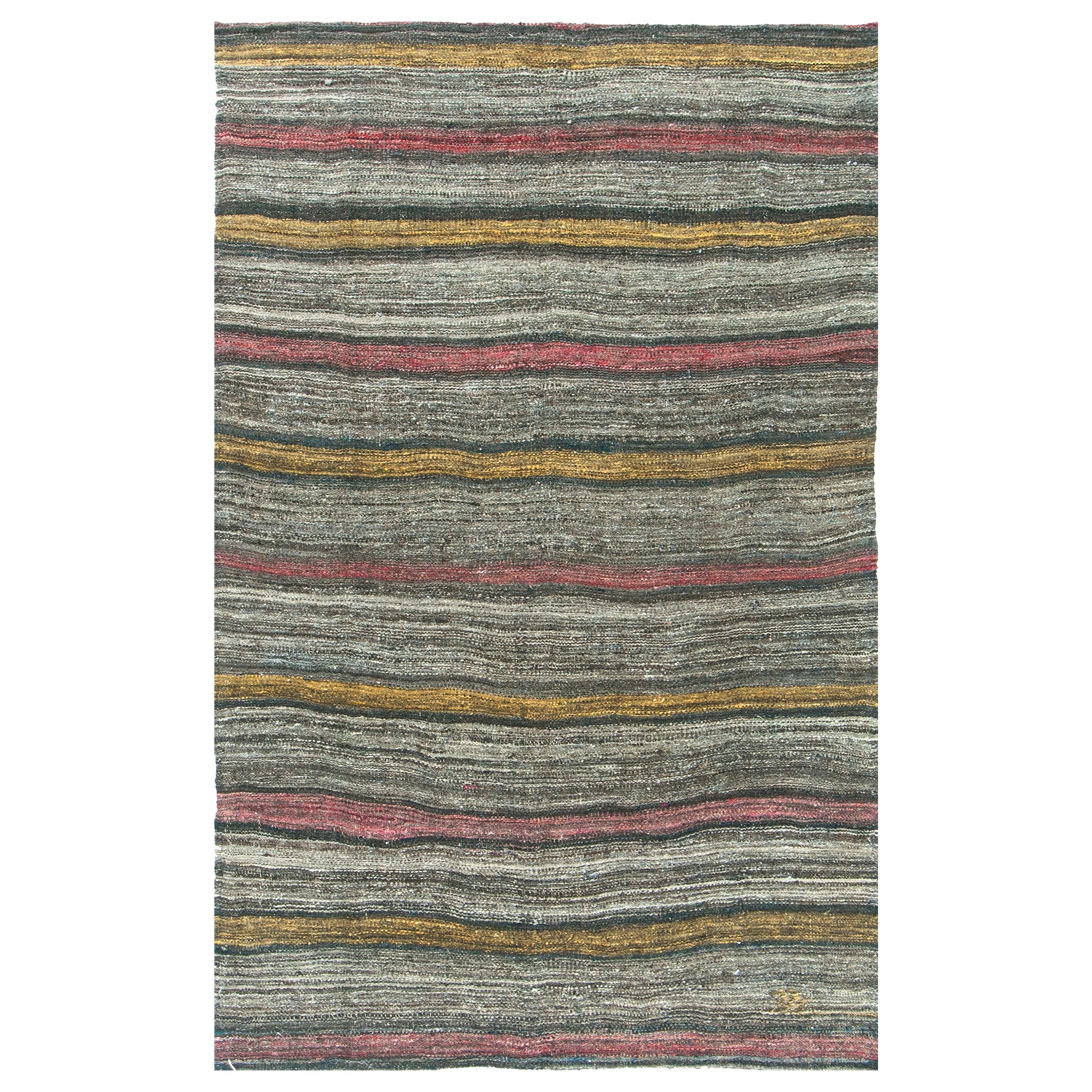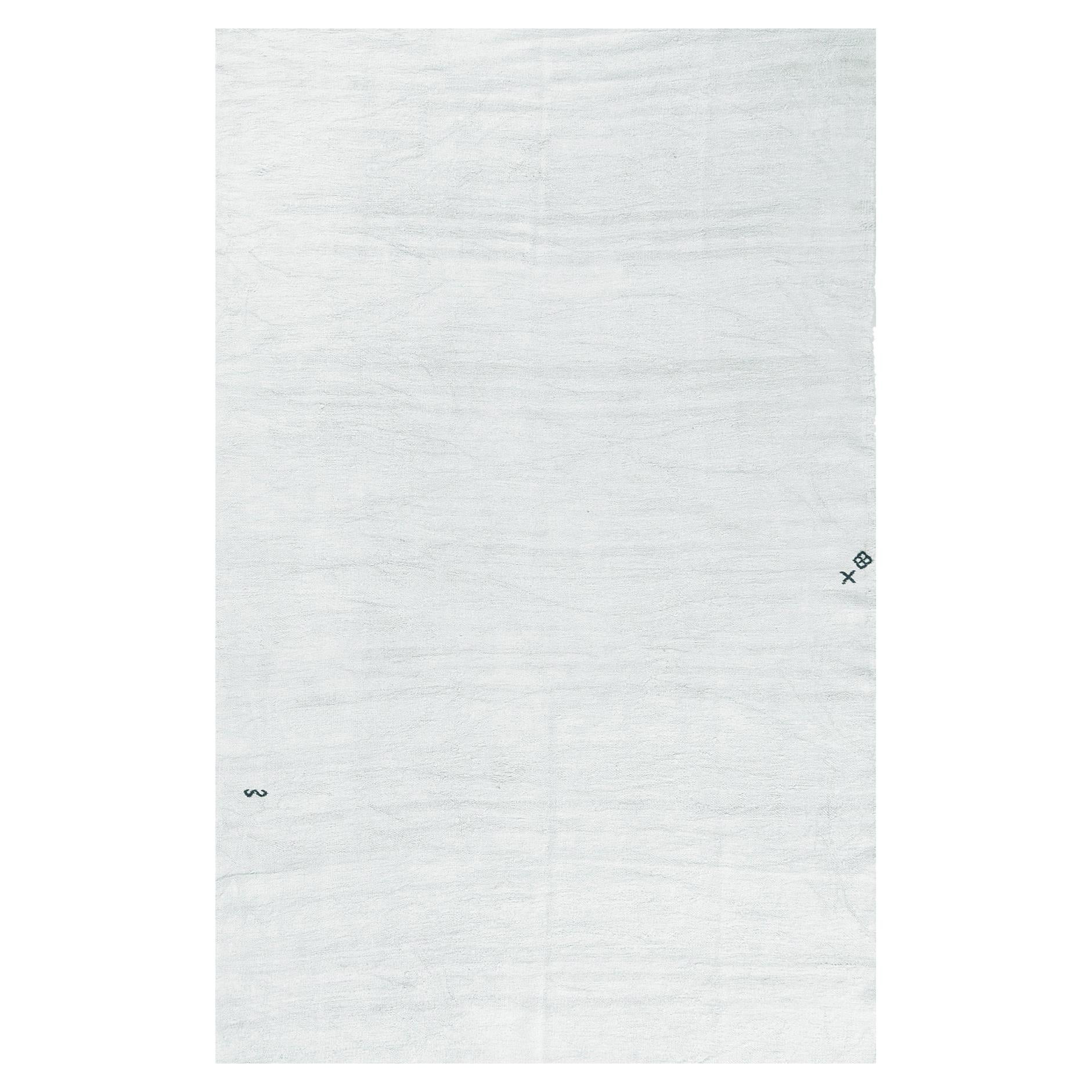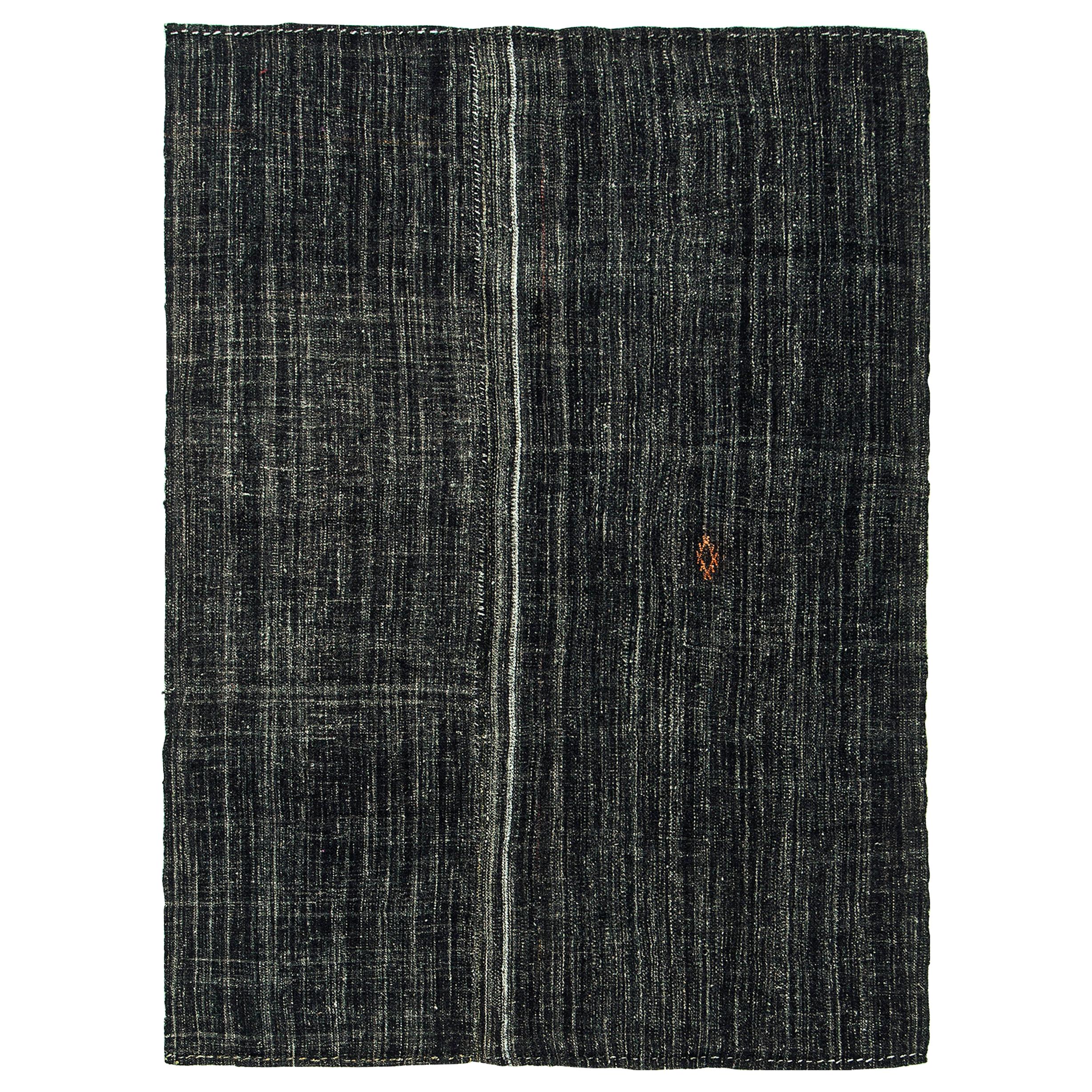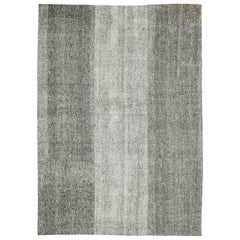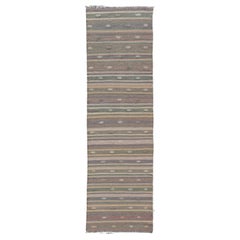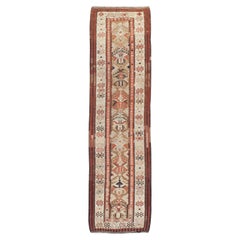
Vintage Turkish Flat-Weave Kilim Runner
View Similar Items
Want more images or videos?
Request additional images or videos from the seller
1 of 9
Vintage Turkish Flat-Weave Kilim Runner
About the Item
About the Seller
5.0
Platinum Seller
These expertly vetted sellers are 1stDibs' most experienced sellers and are rated highest by our customers.
Established in 1989
1stDibs seller since 2009
560 sales on 1stDibs
More From This SellerView All
- Vintage Handmade Turkish Flat-Weave Kilim Accent RugLocated in New York, NYA vintage Turkish flat-weave Kilim accent rug handmade during the mid-20th century. Measures: 6'6" x 9'10".Category
Mid-20th Century Turkish Modern Turkish Rugs
MaterialsWool
- Vintage Handmade Turkish Flat-Weave Kilim Accent RugLocated in New York, NYA vintage Turkish flat-weave Kilim accent rug handmade during the mid-20th century. Measures: 6' 5" x 10' 8".Category
Mid-20th Century Turkish Mid-Century Modern Turkish Rugs
MaterialsWool
- Vintage Turkish Flat-Weave RugLocated in New York, NYA vintage Turkish flat-woven Kilim rug from the late 20th century. Measures: 9' 5" x 12' 11"Category
Late 20th Century Turkish Kilim Turkish Rugs
MaterialsWool
$4,600 Sale Price20% Off - Mid-20th Century Handmade Turkish Flat-Weave Kilim Accent CarpetLocated in New York, NYA vintage Turkish flat-weave Kilim accent carpet handmade during the mid-20th century. Measures: 6' 10" x 9' 7" Flat-weave rugs & carpets: Knotted pile rugs are just one small part of a vast universe of textile techniques suitable for heavy use. If you can imagine it, some weaver has tried it out. Pieces can be roughly divided into those reversible from the start and those never, or at least not initially, reversible. Thus, kilims are considered reversible, while everything else is not. Kilims are tapestry woven rugs with both sides the same, in either slit technique where colors change, or with various methods of avoiding slits. Slit tapestry weave goes back to ancient times and Coptic Egyptian weavers used it for ornaments on garments and larger wall hangings. Slits can be avoided by dovetailing of colors (warp sharing) or by interlocking the wefts. The Navajo weavers of the Southwest practice the first while the Fine shawl weavers of Kashmir and Kerman employed the second. Interlocking produces a one-faced fabric, with smooth and rough, ridged faces. The typical Turkish, Caucasian, or Persian rustic Kilim shows slits, but never long ones. Aubusson French carpets are also slit tapestries and the long color transitions are sewn up as part of the regular maintenance. Some kilims are very Fine. The best antique urban Sehna (Senna) kilims on wool, cotton or silk warps approximate the comparable rugs in refinement and are the most desirable of all Persian kilims. Although the various flatweave techniques are usually expressed in geometric, simple, often repeating, patterns, Sehna kilims demonstrate that even the most intricate designs can be effectively rendered in flat-stich. The term ‘Kilim’ has been extended to cover any pileless, weft-faced heavy textile. Thus, the sectioned and joined northeastern Persian horizontally striped wool rugs are called ‘kilims’. So are the plain-weave end finishes of pile rugs. All these are weft-faced, weft patterned flatweaves. These sectioned pieces are woven not on a frame loom, but one steadied by the weaver at one end and with the warps fastened down at the other. Only relatively recent have these tribal pieces become available. They are used as floorcoverings, hangings, room dividers, furniture covers. They are mostly bitonal in shades of natural dark brown and beige. Some more recent pieces show weaver innovations with ikat and moire effects. Work proceeds quickly and a skilled weaver can complete a thirty foot strip in almost no time. Wefts, the elements added as weaving progresses, play an essential part in what is a flatweave. The best-known example of an extra-weft, wrapping technique is on Caucasian and tribal Persian Soumaks, where a pattern weft wraps around the fixed warp, changing as weaving progresses. Soumaks can be large carpets, Kuba in the Caucasus, small bag faces (Caucasian and Persian Shah Savan saddle bags), or cover scatter rugs (Persian Afshars). The Soumak technique is fast, and a weaver can work much more quickly than tying knots. The left-over wefts are cut off on the back, so the front and back are initially different. As a Soumak on the floor gets used, these weft yarns wear away and the two sides converge although the exact texture remains distinct. There are other ways of pattern by weft. Often on smaller tribal pieces, the pattern weft(s) is (are) part of the weft structure, moving in an out, and holding the whole thing together. These wefts can be complementary or added (supplementary), continuous across the flatweave or cut off as they travel unneeded across the verso. Supplementary weft flatweaves are often very compact and substantial. The nomadic Turkmen and Balouch tribes employ both supplementary and complementary weft techniques on their pieces. Supplementary wefts are often raised on the recto (front) while complementary wefts are flat to the surface. Tribal Kurds employ this extra-wefting technique. The Balouch of Pakistan use complementary wefts almost exclusively on their small woven paraphernalia like salt bags. Flatweave techniques may be combined on a single piece. Afshar rugs employ plain-weave end strips, preceded by Soumak bands, with pile sections between. The large Bakhtiari saddlebags feature Soumak work, pile “islands” an areas of plain-weave. Qashqai rugs and kilims frequently displays checkerboard end strips in continuous, complementary wefting. Another distinct flatweave type is the jajim (jijim, cecim) in which a pattern is added with colored wefts as the weaving of the plain-weave ground progresses. Here the wefts are discontinuous and the pattern stands proud from the voided ground. Often made in two pieces on narrow looms and edge-sewn together, these may have geometric patterns. The term ‘jajim’ also refers to the assembled warp-faced strip and stripe covers from the Shah Savan of northwest Persia, the pattern is defined by warps alone, usually in plain stripes, but sometimes in designs of ladders, snakes, human figures and various animals. Here the color changing warps are continuous. Most are wool, a few are silk. Better to call these something else. Indian ‘Dhurries’ are all cotton kilims and ‘shatrangis’ employ wool wefts on cotton warps. Dhurries are slitless. The cotton texture is more appropriate to the humid and warm climate of the Indian subcontinent. Modern Dhurries...Category
Mid-20th Century Turkish Tribal Turkish Rugs
MaterialsWool
- Contemporary Handmade Turkish Flat-Weave Kilim Colorful Oversize CarpetLocated in New York, NYA modern Turkish flat-weave Kilim oversize carpet handmade during the 21st century with a colorful horizontal pattern. A statement piece with its bright and whimsical colors. Meas...Category
21st Century and Contemporary Turkish Modern Turkish Rugs
MaterialsWool
- Contemporary Handmade Turkish Flat-Weave Kilim Colorful Oversize CarpetLocated in New York, NYA modern Turkish flat-weave Kilim oversize carpet handmade during the 21st century with a colorful horizontal pattern. A statement piece with its bright and whimsical colors. Meas...Category
21st Century and Contemporary Turkish Modern Turkish Rugs
MaterialsWool
You May Also Like
- Striped Flat-Weave Vintage Turkish Kilim Gallery RunnerLocated in Atlanta, GAStripe design Kilim gallery runner from Turkey. Keivan Woven Arts / rug EN-176830, country of origin / type: Turkey / Kilim, circa 1950 This lightly-colored Turkish Kilim runner...Category
Mid-20th Century Turkish Kilim Turkish Rugs
MaterialsWool
- Stripe Vintage Turkish Kilim Flat-Weave Geometric Designed RunnerLocated in Atlanta, GATurkish Kilim vintage carpet in green, tan, orange. Keivan Woven Arts / rug TU-NED-610, country of origin / type: Turkey / Kilim, circa 1950 This Kilim rug from Turkey features a ...Category
Mid-20th Century Turkish Kilim Turkish Rugs
MaterialsWool
- Embroidered Geometric Colorful Vintage Turkish Flat-Weave Kilim RunnerLocated in Atlanta, GAMeasures: 3'0 x 10'9 Embroidered Geometric colorful vintage Turkish flat-weave Kilim Runner. Keivan Woven Arts / rug TU-NED-5010, country of origin / type: Turkey / Kilim, circa 195...Category
Mid-20th Century Turkish Kilim Turkish Rugs
MaterialsWool
- Vintage Anatolian Turkish Flat-Weave KilimBy Mehraban RugsLocated in WEST HOLLYWOOD, CAA vintage Anatolian Turkish flat-weave Kilim. This piece is the epitome of natural elegance. Its brown and ivory colors and toothing detailing alongside the rug's stripe pattern crea...Category
Mid-20th Century Turkish Turkish Rugs
MaterialsWool
- Vintage Anatolian Turkish Flat-Weave KilimBy Mehraban RugsLocated in WEST HOLLYWOOD, CAA unique and stylish vintage Anatolian Turkish flat-weave. Banded in black and berry red, is a one-of-a-kind tribal rug. Unique ethnic stitching and pile bring a playful essence. Vin...Category
Mid-20th Century Turkish Turkish Rugs
MaterialsWool
- Vintage Turkish Kilim Flat-Weave CarpetLocated in New York, NYA cheerfully colored mid-20th century handmade room size Turkish Kilim. 9' x 10'11''Category
20th Century Turkish Adirondack Turkish Rugs
MaterialsWool
Recently Viewed
View AllMore Ways To Browse
Gray Top Table
Carved Leg Table
Carved Table Legs
Chair Lounge Fabric
Used Club Chairs
Dining Room Sets Used
Mid Century Chair A Frame
1940s Vintage Table
Antique 19th Century Table
Center Of The Table
French Glass 19th Century
19th Century French Glasses
Retro Stools Furniture
A Frame Chair Midcentury
Furniture Values
Glass Table S
Environment Furniture
Modern Contemporary Wall

